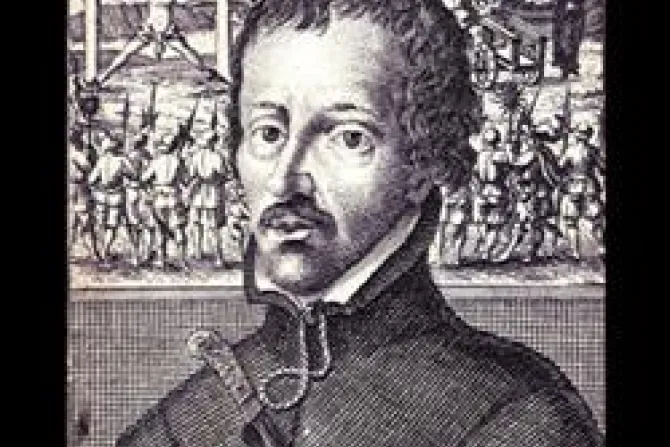Denver, Colo., Oct 23, 2011 / 05:49 am
On October 25, the Catholic Church honors the 40 Martyrs of England and Wales, who died resisting the royal takeover that gave rise to the modern-day “Church of England” in the 16th and 17th centuries.
When Pope Paul VI canonized the 40 saints in 1970, he looked forward to “the day when, God willing, the unity of the faith and of Christian life is restored” in the once-Catholic nations, with due respect for “the legitimate prestige and the worthy patrimony of piety and usage proper to the Anglican Church.”
Contrary to some popular understandings, King Henry VIII did not strictly intend either to form a separate Protestant church, or to obtain a divorce. Rather, on account of his desire for an annulment of a marriage judged valid by the Pope, Henry declared himself “supreme head” of the English Church.
It was only gradually, under the influence of the renegade archbishop Thomas Cranmer that Henry's “Anglicans Ecclesia” took on its distinctly Protestant character – losing, in the process, most of the seven sacraments that the disgraced king had once defended against Martin Luther's attacks.
Henry VIII's “Act of Supremacy,” however, effectively defined supporters of papal authority as criminals guilty of treason against the crown. Under the subsequent reigns of Edward VI and Elizabeth I, the same sentence fell on those who defended the Mass, the priesthood, and many of the sacraments.
The resulting decades of persecution, between 1535 and 1679, represented one of the most brutal persecutions of the Church since its first centuries under the Roman Emperors. Convicted Catholics typically died by hanging, after suffering torture meant to make them betray “accomplices” in the faith.
Priests, however, often received the penalty of “drawing and quartering.” This involved being dragged to the site of execution, and hanged by a noose for a duration that typically caused torture but not death. This was followed by mutilation, disembowelment, beheading, and cutting of the body into four parts.
The martyrs honored on Oct. 25 represent a fraction of the dead, who number at least in the hundreds. Out of the 40, 13 were diocesan priests, and 20 more belonged to religious orders including the Augustinians, Benedictines, Brigittines, Franciscans and Jesuits.
Seven of the 40 martyrs were laypersons, including three mothers of children. Jesuits – whose strict orthodoxy and evangelistic zeal particularly threatened the Anglican establishment – account for one-quarter of the 40 martyrs.
Of the 40 martyrs celebrated on Oct. 25, the best-known may be the Jesuit priest St. Edmund Campion, who left Anglicanism and spent time in Ireland before making his way back to England with the intention of bringing his countrymen back to their traditional faith.
Both Campion’s life and his gruesome death prompted some Anglicans to embrace the truth for which he sacrificed himself. St. Henry Walpole, for instance, not only witnessed Campion’s death, but had his own clothing stained with the martyr’s blood in a moment that led him toward conversion.
Laypersons who gave aid and shelter to priests and religious were also subject to death, under a 1583 law. St. Margaret Clitherow, a laywoman who is among the 40 canonized martyrs, had Masses secretly offered at her home. For this “crime,” she died by being crushed to death with an 800-pound weight.
At present, the Catholic Church in England celebrates the 40 Martyrs of England and Wales on a different day than the rest of the Roman Catholic Church, May 4, having combined their feast day with that of 240 other English martyrs beatified by Bl. John Paul II.
Even this great “cloud of witnesses,” however, does not represent the full extent of the persecution that occurred during the English Reformation.
As a note on the English liturgical calendar explains, “the number of those who died on the scaffold, perished in prison, or suffered harsh persecution for their faith in the course of a century and a half cannot now be reckoned.”


